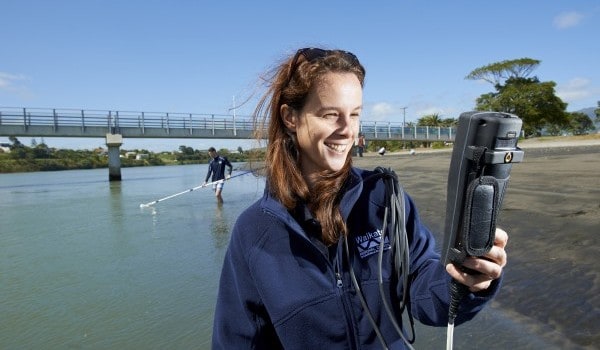Waikato Regional Council news
With the summer swimming season about to kick off, Waikato Regional Council will again be helping beach users know whether water quality is suitable.

Last summer, the council re-activated a water quality monitoring programme at Ngarunui Beach, Sunset Beach and seven east beaches, testing to see whether faecal bacteria levels were OK for contact recreation, such as swimming and surfing.
It was the first such testing since 2009 and the re-activation was part of a council drive to gain better information about what’s happening in our coastal waters and to provide a community service. It will carry on this summer.
Between November and March, beach users can go to www.waikatoregion.govt.nz/coastalresults to check what the latest results are for the targeted beaches.
Results last summer were generally positive, with minor, temporary issues only reported for one week at Whitianga’s Buffalo Beach.
The east coast beaches monitored are Whitianga, Hot Water Beach, Tairua, Pauanui, Whangamata and Whiritoa, and Sunset Beach and Ngarunui on the west coast.
“The testing provides valuable guidance for swimmers and surfers,” said coastal water quality scientist Pete Wilson.
“The number of faecal bacteria present in the water indicate the likelihood of contracting a disease from many possible pathogens in the water such as bacteria or viruses.
“On our website, results from the monitoring programme are compared to national guidelines to determine the suitability for recreational use.”
Dr Wilson stressed that water quality at Waikato beaches is generally high but caution should be taken following heavy rain. Heavy rain flushes contaminants from urban and rural land into waterways, which then make their way to the coast. These contaminants may be present in the water for up to 48 hours after heavy or prolonged rainfall.
Last summer’s issue at Buffalo Beach appeared to have been a blip, the sort of thing that can happen after heavy rain. “Bacteria levels there were back to normal by the time the next sample came in,” Dr Wilson said.
If any issues of concern are identified, the regional council works with district councils and the Waikato District Health Board to assess results that may have public health implications and to provide the public with the best quality information.
“Our monitoring programme, while it isn’t picking up major issues, will help provide assurance to the public going forward and help us track any trends or emerging issues,” said Dr Wilson.
